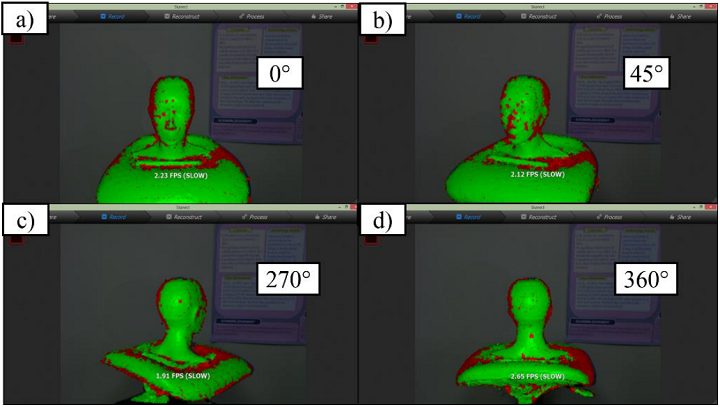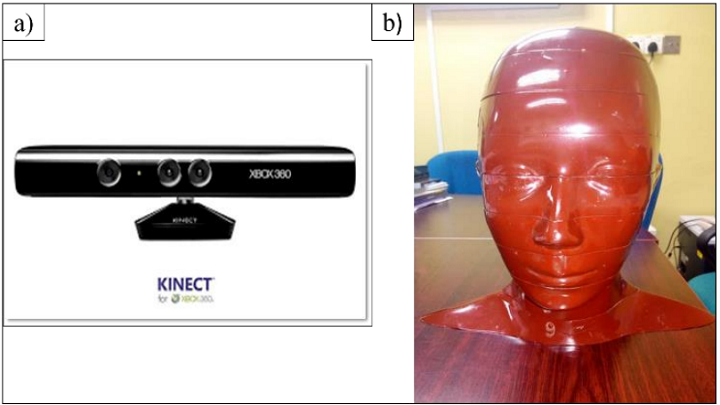Researchers Use Microsoft Kinect Xbox 360 Scanner to Obtain Topography for 3D Printable Radiotherapy Phantom
To verify treatment when giving radiation, doctors often turn to radiotherapy phantoms for quality assurance, since the dosage can’t be directly measured. 3D printing is making it easier to fabricate these tissue-equivalent materials for patient-specific dosimetry purposes, and N. E. Zain and W. N. Rahman, researchers from the Universiti Sains Malyasia (USM), published a paper about this very topic.
“This study investigates the application of Microsoft Kinect® Xbox 360 scanner to model human topography for 3D printed radiotherapy phantom fabrication,” the abstract states.
Standard anthropomorphic phantoms are often too expensive to use in most cases, and don’t always represent the condition of the specific patient. But 3D printing can now be used for dosimetry applications, such as using a surface scanner to make a radiotherapy bolus. While previous studies focused on making 3D printed patient-specific phantoms by digitizing radiographs or abstracting data from CT images, this one obtained the surface topography for a 3D printable radiotherapy head phantom with a Microsoft Kinect Xbox 360 scanner.
“In contrast to using patient CT data to obtain patient-specific topography, the use of low cost, structured light, 3D optical scanner are more comfortable and reduce unwanted radiation dose to patients,” they explained.
Developed for the Xbox 360 video gaming system, the high-resolution Microsoft Kinect sensor is an inexpensive, short-range 3D scanning camera. Three features work together to detect motion and create a physical image for users on the screen:
- RGB (red, green, blue) color with a depth sensor
- VGA (video graphics array) camera
- Multi-array microphone
The original plan was to use the Kinect to eliminate game controllers, though as of 2018, Microsoft had discontinued all Kinect hardware for video games. But, because of its ability to measure color and depth simultaneously at video rate, the device actually gave Microsoft a leg up in academic and commercial applications. For this research in particular, the Kinect specifications make it “a great scanner to obtain the topography of the phantom.”
“In this study, we evaluate the Kinect® sensor by performing 3D scanning involving the head of the Alderson RANDO® phantom,” the researchers wrote.
To test the performance and feasibility of the Kinect, the scanner angle was set at ± 10° and the distance between it and the standard phantom was ± 50 cm. In order to get the right amount of data, scanning was completed 360° around the phantom several times at different positions. In order get the data for rendering the phantom image, the scanner was connected to a desktop with Skanect software, and 3D Builder was later used to edit the images, which were saved in STL format.

Figure 3. The repeated 360° clockwise scanning process using Skanect software; a) 0° position, b) 45° position, c) 270° position and d) 360° position.
“The total scanning time to obtain the image is estimated at around 1 to 2 hours ascribable to the low video-rate procured; ±10 frames per second (FPS),” the researchers said.
“It is vital to ensure both phantom and scanner to be static during image acquisition to avoid data tracking lost.”
The researchers note that when a computer with a slow processor is used, the scanning time will likely be delayed several time. A computer with a higher CPU can ensure a streamlined video with high-speed FPS, and it should also have significant RAM in order to “contain and run the applications smoothly.”
You can see the final phantom image in STL format above. There are two interior design options for the phantom – whole with slots, and a hollow slot insertion.
“The finding suggests that the radiotherapy phantom can potentially be developed using the Kinect® sensor, which is easier and cheaper to operate in comparison to other techniques of fabricating 3D printed radiotherapy phantom,” the pair concluded.
“The application of 3D printed patient-specific radiotherapy phantom for quality assurance and treatment verification might improve the overall treatment quality in radiotherapy, especially using a low-cost type of scanner to obtain patient image data.”
Discuss this news and other 3D printing topics at 3DPrintBoard.com or share your thoughts in the Facebook comments below.
Subscribe to Our Email Newsletter
Stay up-to-date on all the latest news from the 3D printing industry and receive information and offers from third party vendors.
Print Services
Upload your 3D Models and get them printed quickly and efficiently.
You May Also Like
Consolidation in AM: How 2025 Is Shaping the Industry’s New Normal
The first half of 2025 has been marked by a clear shift in the additive manufacturing (AM) industry. Companies are no longer just focused on developing new tech by themselves....
Heating Up: 3D Systems’ Scott Green Discusses 3D Printing’s Potential in the Data Center Industry
The relentless rise of NVIDIA, the steadily increasing pledges of major private and public investments in national infrastructure projects around the world, and the general cultural obsession with AI have...
3DPOD 260: John Hart on VulcanForms, MIT, Desktop Metal and More
John Hart is a Professor at MIT; he´s also the director of the Laboratory for Manufacturing and Productivity as well as the director of the Center for Advanced Production Technologies....
Making Space: Stratasys Global Director of Aerospace & Defense Conrad Smith Discusses the Space Supply Chain Council
Of all the many verticals that have been significant additive manufacturing (AM) adopters, few have been more deeply influenced by the incorporation of AM into their workflows than the space...




































